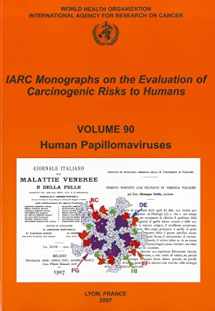
Human Papillomaviruses (IARC Monographs on the Evaluation of the Carcinogenic Risks to Humans, 90)
Book details
Summary
Description
This ninetieth volume of the IARC Monographs on the Evaluation of Carcinogenic Risks to Humans considers human papillomaviruses (HPVs) which were evaluated by a previous Working Group (IARC, 1995). The monograph in the present volume incorporates new data that have become available during the past decade.
HPVs represent the most common infectious agents that are transmitted sexually throughout the world; the major risk factors are behaviors associated with sexual activity. Although most infections are asymptomatic and are cleared within a period of 2 years, genital HPV infection can lead to clinical disease, including anogenital warts, cervical neoplasia, cervical cancer and other anogenital cancers. The risk for persistence of infection and progression of the more than 40 genital HPV types to grade 3 cervical intraepithelial neoplasia (CIN3) and cancer differs widely. Persistent infection with carcinogenic HPVs occurs in virtually all cases of cervical cancer.
Previous evaluations of HPVs have classified types 16 and 18 as carcinogenic to humans (group 1), types 31 and 33 as probably carcinogenic to humans (Group 2A) and some types other than 16, 18, 31 and 33 as possibly carcinogenic to humans (Group 2B). At that time, the evaluation of types 16 and 18 was based on the strong association between infection with these HPVs and cervical cancer. For types 31 and 33, the association was less strong.
The new epidemiological data reviewed in the present volume strongly support and further confirm the previous evaluation of types 16 and 18, and provide new evidence for other HPVs. This information, which includes strong evidence of carcinogenicity at sites other than the cervix, supports new evaluations for several other HPV types in addition to those mentioned above. Since the Working Group was convened in 2005, important innovations in HPV prophylaxis have occurred and these needed to be included in this volume. To date two prophylactic vaccines have been developed and used in large multicentric trials. This prophylactic vaccination is expected to reduce the incidence of HPV-related genital diseases. However, the benefits of prophylactic vaccines in a broad public health perspective will be achieved only if such vaccines can be provided to those groups of women for whom access to cervical cancer screening services is most problematic. Therefore, the development of second-generation vaccines that are expected to be cheaper, easier to deliver and to provide T-cell response against pre-existing HPV infections is highly desirable.


We would LOVE it if you could help us and other readers by reviewing the book
Book review



